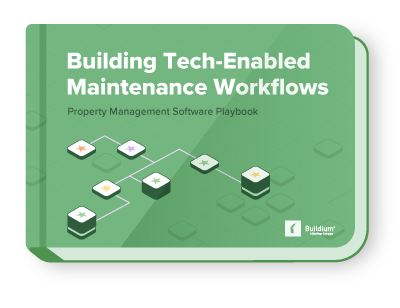When you think of property management, what terms come to mind? Doors? Turnover? Vacancy rates?
Chart of Accounts
Want clearer, cleaner books? What about a more useful view into your properties or just easier accounting in general?
Get the GuideWhat about the term human capital?
The concept of investing in people as well as property is at the core of everything Socially Innovative Properties West in Louisville, KY does. Founded by social entrepreneur and philanthropist Martha Diebold, the company isn’t a nonprofit, but they’re not your typical property investment firm, either.
That’s because they are less interested in turning a profit on properties and more interested in turning people’s lives around.
SIP launched in May 2020, when Diebold bought an entire city block in the Russell neighborhood in West Louisville. Their residents include some of the most vulnerable populations in the city.
“Our residents are navigating the challenges of poverty, mental illness, substance misuse, justice involvement and other traumas,” explains Stephanie Barnett, who has contributed to SIP’s property management vision, which they have renamed Resident Services. “Many of our residents’ lived experiences would have prevented them from obtaining permanent housing. Louisville has ordinances that require them to at least be considered, but most landlords would not accept them.
Having worked on a previous housing initiative for young mothers, both Barnett and Diebold understood that housing is a basic building block for success. It anchors people and gives them a sense of place, a sense of community. And the community can help lift up people who have challenges in their lives.
“I blame her. She blames me for being where we are,” jokes Barnett. “We both were called to experiment with housing for a population that really had been overlooked?”
Diebold wanted to see what would happen if they came at housing from several angles. She and her son, Garrett, who holds a degree in architecture, were inspired to revitalize neglected homes to provide residents with a safe and comfortable place to live. Then, they wanted to support residents’ ability to stay in those homes by connecting them to relevant resources. Finally, they wanted to make a meaningful impact on the community.
Their starting place? The Russell neighborhood in West Louisville.
Investing in the Russell Neighborhood
The Russell neighborhood is a 1.4-square-mile community once dubbed the Harlem of Louisville. It was the cultural and economic center for Black residents from the late 19th century up until World War II. The neighborhood then began a decline, according to nonprofit Vision Russell, that was exacerbated by an urban renewal project in the 60s, which demolished its commercial center. Today, the population of nearly 6,000 residents experience a poverty rate 3.5 times higher than the rest of Louisville.
“So back in the day, it had a history of great small business and art and culture,” explains Barnett. “But, like so many larger cities, this area was heavily impacted by red-lining which led to disinvestment especially when populations migrated out to the suburbs.” Some developers were buying up lucrative properties, looking to turn a profit. Other investors bought up lower-income housing, but were less interested in the properties’ upkeep. That didn’t leave much room for safe or affordable housing.
“Martha and Garrett’s passions were to preserve this history, and to invest in human capital, not just in buildings for financial capital.”
So the Diebolds bought an entire city block to set aside, not only for affordable housing, but for organizations and businesses that would uplift the community.
They dubbed it The Vineyard. Diebold and her son, Garrett, then set to work restoring the homes on the street, many of which had fallen into disrepair. Two buildings which have been fully renovated, will eventually be sold to a neighborhood church for its outreach ministry and a minority and woman-owned behavioral health organization. Another community partner, Goodwill Industries, is collaborating with SIP to pilot a housing initiative for formerly housing insecure participants in their job training programs.
“Everything that they invested in bringing the buildings back to life, is significantly larger than what they will yield from the sales of these buildings” says Barnett. “These historic buildings will be in the hands of people who can better relate to the neighborhood because they are the neighborhood. Martha’s model ensures that each of the new building owners have a strong foundation for their own wealth building, which is both generous and courageous.”
And as far as the residents who have lived in the Vineyard before it was the Vineyard? Their former landlords, a nonprofit that qualified for tax credits, charged them very low rent. Diebold has not raised the rent, even though she doesn’t receive the financial benefits of the tax credits.
Flipping the Script of Property Management
SIP originally hired an outside property management firm to help them care for the buildings, but found that they needed a different approach to care for the residents, as well.
Because their residents didn’t pay as much in rent and fees, investments in service and maintenance were lacking. And although the approaches employed by the property management company were satisfactory for managing the properties, SIP found that didn’t always work for their residents.
In the wake of the pandemic, many of their residents experienced income reductions due to temporary business shut-downs, loss of child care and health issues. When the former property management was unable to work with residents to identify and apply for rental assistance, SIP decided to take matters into their own hands.
“We just started knocking on people’s doors after work and on weekends, taking the paperwork with us, and leveraged our relationships with local government and community ministries to streamline the process.”
From Property Management to Resident Services
This experience convinced Diebold to try a different approach to property management, even renaming it “resident services.”
“The language matters,” Barnett says. “Property management means that we’re managing buildings, we’re managing properties, right? Resident Services places the emphasis on serving residents’ needs. We believe that engaged and supported residents are more likely to be invested in the community and committed to creating and maintaining safe and healthy living environments. That, ultimately, is good for the properties too!”
From SIP’s perspective, lease violations, such as failure to pay rent or care for a property are indicators of an underlying unmet need, one that the SIP team hopes to help remedy.
“Punishing someone with the threat of eviction doesn’t address the underlying issue,” she explains.
The SIP team has now expanded to include a new Resident Services Coordinator, a dynamic young professional with a Sociology degree and a volunteer with decades of experience as a case manager. SIP has conducted resident surveys and creates “open office” hours to ensure that residents have outlets for expressing needs and ideas on ways to make the community stronger and safer.
Investing in People
The focus on residents’ needs has led to a number of community-driven initiatives and collaborations. They’ve helped to relocate the behavioral health group to the neighborhood and have a simplified referral process to ensure that residents requesting this form of support can be seen quickly.
They have partnered with a local food justice organization to host regular “Chop and Chat” gatherings, where they bring locally grown, organic vegetables into a neighborhood that is considered a “food desert.”
They’ve connected three of their residents with jobs. They’ve worked to mitigate the several safety issues that come with living in a neighborhood that has been the site of violent crime and drug activity.
Currently, they’re working with their local utility companies to make those older homes more energy-efficient and reduce the cost of utilities for residents, some of whom are paying more for utilities than rent.
Tying Their Future to the Russell Community
Because they’ve only managed The Vineyard for just over a year, SIP believes it needs a little more time to measure their success. But they know for certain it won’t be measured by their bottom line.
They’re looking at their investment in a different way.
“We are confident that we can turn this into a successful financial business model. If our residents are healthy and thriving, they’re going to pay their rent. They’re going to take care of their homes. So that’s the business angle.”
But SIP is looking as their investment beyond “dollars and cents.” They’re fully invested in the community, and it’s well-being is what comes first for them.
“We’re just going to stay focused on this precious spot in West Louisville.” There’s still a lot of work to do on the buildings and a lot of support and nurturing that can be done with the people that are in those buildings. For the next two to three years, we want to be able to realize the vision for The Vineyard that our residents are helping shape.”
Read more on Industry Research

